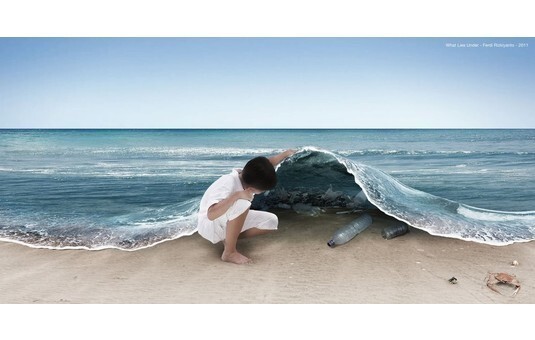June 8th: International Ocean Day

“Human activities place a heavy toll on the world’s oceans and the seas” says Secretary General of the UN in his message on the occasion of World Ocean Day. The celebration in question provides us with the opportunity to increase our awareness on the factors that threaten our oceans.
On the occasion of this day, it is worthwhile knowing some of the details concerning plastic waste, which because of to ocean undercurrents have now flooded the waters of oceans, namely, 2/3 of the Earth’s surface.
Did you know that...
- In the last decade, we have produced more plastic than during the entire last century
- 50% of the plastic that we handle, we use only once and then throw it away
- The quantity of plastic we throw away every year is enough to cover 4 times the Earth’s surface
- Approximately 500 billion plastic bags are used globally every year. More than one million plastic bags are used every minute.
- Plastic objects that are thrown at sea, are disintegrating into very small pieces, so that the particles of a one-litre plastic bottle can “travel” around all of the world’s beaches
- Almost every piece of plastic that has ever been produced continues to exist in some form or other
- 46% of the plastic is found floating in the oceans and continues to float for years before finally ending up at the bottom of the sea. Also, 90% of the waste floating in the sea is plastic, with 46,000 pieces of plastic floating at every square mile
- One million seafowl and 100,000 sea mammals die each year from plastic waste. Pieces of plastic have been found in the stomachs of 80% of seafowl in a study conducted in 2010 with estimates of it reaching 99% until 2050. Seafowl swallow small pieces of plastic because they think it is food and, often, these pieces clog their digestive tract causing asphyxiation or they remain in their stomachs creating a false sense of fullness, thus condemning them to death by starvation. It is worth noting that up to 200 pieces of plastic have been found in the stomach of a seabird. Apart from fowl, plastic also poses a threat for sea mammals, which end up dying in a similar way.
Is it possible to stop using plastic?
Obviously, not entirely. However, we all can contribute to the reduction of the use of plastic and the mitigation of the imprint of plastic in the sea.
How?
- Avoid using disposable plastic objects (e.g. plastic cutlery, straws, bags) and use reusable objects e.g. tupperware for foods instead of plastic bags or thermos instead of disposable plastic containers for our beverages.
- Reuse plastic by transforming a product into something else e.g. a plastic food container can be used as storage space.
- Prefer products that are packaged in paper or glass instead of plastic (e.g. detergents).
- Avoid using packaged products and try to use our own containers when buying bulk products (e.g. dry fruits, cereals).
- Replace plastic with other raw materials for objects that we use. For example, use cloth-made bags for shopping instead of nylon bags.
- Store foods by placing a plate over them instead of wrapping them up in plastic foil.
- Compost our organic waste so that we need less plastic garbage bags.
- When shopping for products, select companies that invest in the protection of the environment and have proved to understand the concept of recycling.
- Recycle all electric and electronic waste and plastic in general.
- Participate in voluntary actions for the cleaning of beaches.
- Discuss with family and friends about the importance of reducing plastic for the environment and our lives.
RAINBOW WATERS and plastic management
RAINBOW WATERSdoesn’t use disposable water bottles, in order to help reduce plastic waste.
Its bottles are of 18.9lt capacity and are returnable: They are disinfected, refilled and at the end of their lifecycle are fully recycled.
To this dayRAINBOW WATERShas produced 320,000,000 litres of bottled water. If this water was bottled into disposable 10lt PET bottles, we would be burdening the environment with 32,000,000 bottles, which if placed one next to the other would cover a distance of 12,800km, equal to the Earth’s diameter!
In addition, we prevented the discharge of 7,000 tons of plastic in the environment, which would need hundreds of years to disintegrate.
Finally, with reusable water bottles, we have saved up on a massive quantity of plastic, which if put into production would also encumber water resources. Suffice it to say that, in order to produce a plastic water bottle, at least double the quantity of water is required than that contained within the bottle (water imprint). In other words, every time that a bottle of mineral water is reused, approximately 40 litres of water are saved up.
Also, read:
A message in a bottle... of a different kind!
Rainbow Waters®’s Corporate Social Responsibility for the environment
Sources: coastalcare.org, ecowatch.com, thegreendivas.com, www3.imperial.ac.uk, europarl.gr
Photo credits: Ferdi Rizkiyanto


